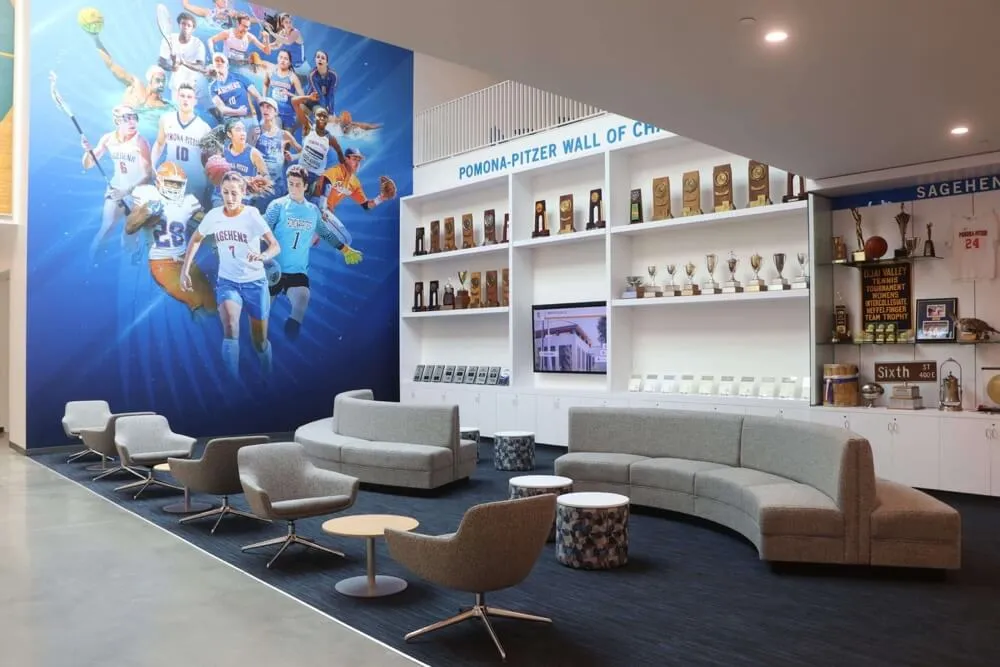When college coaches walk through your athletic facility doors, the clock starts ticking on a critical impression-forming window that can significantly impact your athletes’ recruiting opportunities. These visits represent far more than casual drop-ins—they’re strategic evaluation sessions where coaches assess not just individual athlete talent but also program culture, coaching quality, facility investment, and institutional commitment to developing college-ready competitors.
High school athletic directors, coaches, and administrators who understand how to properly prepare for, host, and follow up on college coach visits create competitive advantages for their student-athletes that extend well beyond game performance alone. In an increasingly competitive college recruiting landscape where coaches have limited time and resources to evaluate prospects, schools that make visiting coaches feel welcomed, provide efficient access to information, and demonstrate professionalism throughout the process significantly increase their athletes’ visibility and recruiting success.
This comprehensive guide explores every dimension of college coach visits—from understanding NCAA recruiting calendars and contact rules to preparing facilities and documentation, hosting visits effectively, showcasing athletic achievements, building lasting coaching relationships, and leveraging visits strategically to maximize recruiting outcomes for your entire athletic program.
Why College Coach Visits Matter for Your Athletic Program
College coach visits serve multiple crucial functions in the recruiting ecosystem. For athletes, these visits provide opportunities to demonstrate talent and character in their home environment where they feel most comfortable. For high school coaches, visits enable relationship-building with college programs that creates long-term pipelines benefiting future athletes. For athletic directors, successful coach visits validate program quality and facility investments while strengthening institutional reputation within the college coaching community.
Schools that excel at hosting college coach visits develop reputations as coach-friendly programs where recruiters know they'll receive professional treatment, efficient access to athletes and information, and transparent communication about athlete capabilities. These reputations translate directly into increased recruiting attention, more frequent visits, better placement rates for athletes, and stronger college relationships benefiting entire athletic departments across multiple sports and recruiting cycles.
Understanding the College Coach Visit Landscape
Before diving into preparation and hosting strategies, it’s essential to understand the broader context of how coach visits fit within the college recruiting process and what coaches hope to accomplish during these campus stops.
The Role of Coach Visits in Modern Recruiting
College recruiting has evolved dramatically over the past decade, with technology enabling coaches to evaluate prospects through extensive video footage, statistical databases, and digital communication long before meeting athletes in person. However, despite these technological advances, in-person visits remain critically important for reasons technology cannot replicate.
Personal Assessment Beyond Statistics: While video and statistics reveal athletic ability, in-person visits allow coaches to assess intangible qualities that determine college success—coachability, work ethic, attitude, leadership, interaction with teammates and coaches, and how athletes handle pressure and adversity. These character factors often predict college athletic success more accurately than raw talent measures.
Program Culture Evaluation: College coaches evaluate whether high school programs prepare athletes for college-level expectations through proper training methods, competitive intensity, academic balance, and appropriate athlete behavior and maturity. Athletes from well-run programs with college-prep cultures transition to collegiate athletics more successfully, making high school program quality a significant recruiting consideration.
Relationship Building: Recruiting involves relationships between college and high school coaches that extend beyond individual recruiting cycles. College coaches return repeatedly to programs where they’ve previously recruited successfully, received honest assessments of athlete capabilities, and experienced professional cooperation. Single positive coach visits create foundations for multi-year recruiting relationships benefiting numerous athletes across multiple graduating classes.
Contextual Understanding: Watching athletes compete in their home environments provides context about competition level, team dynamics, coaching philosophy, and developmental trajectory that video highlights cannot convey. Coaches assess how athletes perform against local competition, whether they dominate or struggle, and how they respond when games don’t go their way.
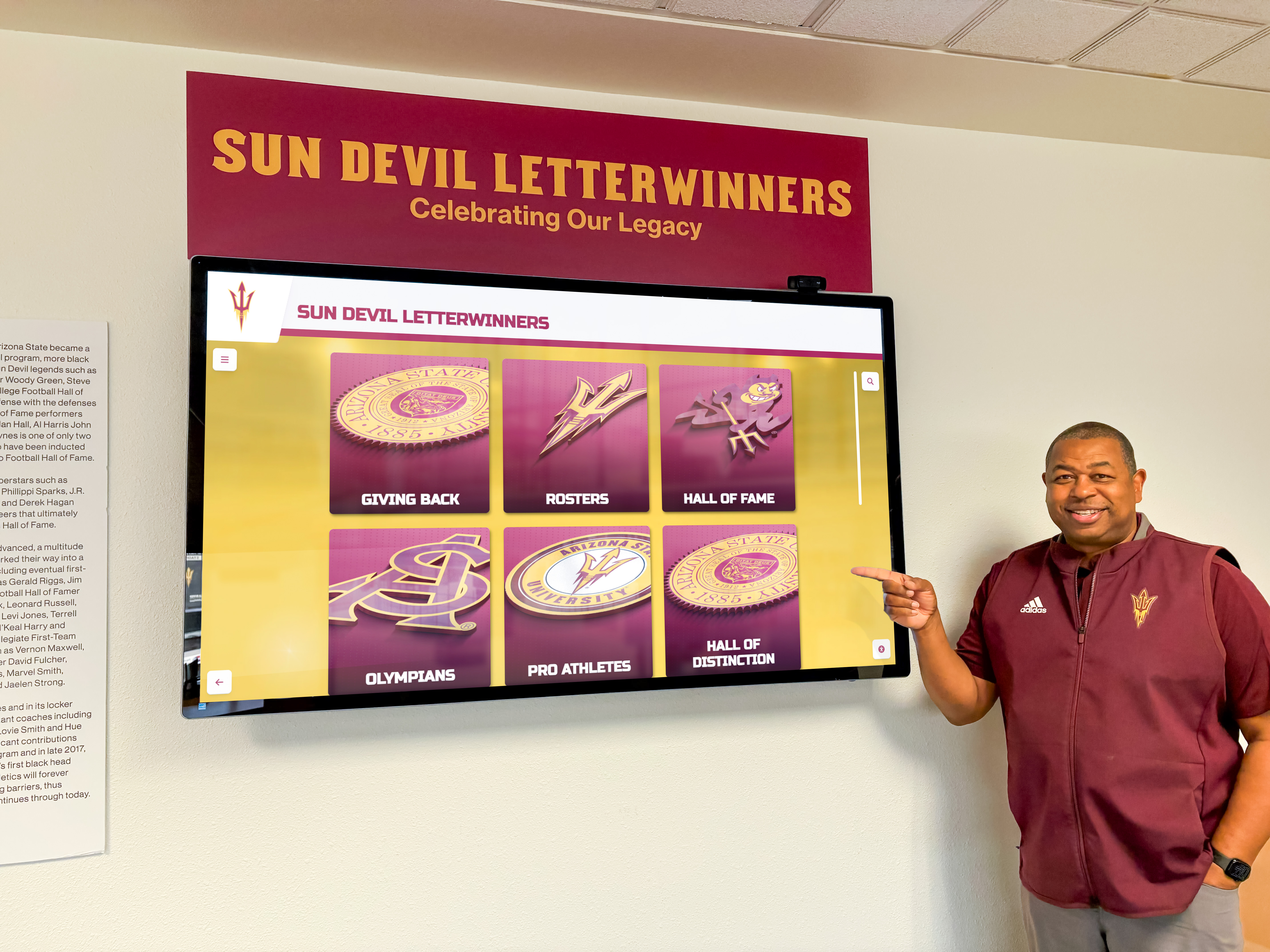
NCAA Recruiting Calendar and Contact Periods
Understanding NCAA recruiting calendars proves essential for properly managing college coach visits since these calendars define when coaches can visit high schools, attend competitions, and contact athletes directly.
Contact Periods: During contact periods, college coaches may have face-to-face contact with recruits and their parents at the athlete’s school, home, or competition venues with almost no restrictions. Coaches can watch athletes compete, meet with high school coaches, speak directly with athletes, and conduct comprehensive evaluations. For high school programs, contact periods represent prime opportunities for hosting productive coach visits.
Evaluation Periods: During evaluation periods, college coaches can watch athletes compete and visit their schools to speak with coaches and administrators, but coaches cannot have off-campus in-person contact with recruits or their families. Coaches attending games during evaluation periods can observe athletes but must limit conversation to brief hellos. These rules make pre-visit coordination with high school coaches particularly important since coaches need efficient access to athlete information without violating contact restrictions.
Quiet Periods: Quiet periods prohibit coaches from visiting recruits at their homes or schools. College coaches can still evaluate prospects at their college campuses and can communicate via phone and electronic correspondence, but they cannot conduct off-campus visits. Understanding quiet period timing helps high school programs avoid scheduling conflicts and manage athlete expectations about when coaches might visit.
Dead Periods: During dead periods, coaches cannot have any in-person contact with recruits anywhere—not at high schools, competitions, college campuses, or any other location. No in-person recruiting activities occur during these periods. Schools must track dead period calendars to avoid scheduling visits during prohibited windows.
Sport-Specific Variations: Each NCAA sport maintains different recruiting calendar schedules optimized for that sport’s competition seasons and recruiting patterns. Football contact periods differ from basketball timelines which differ from soccer, baseball, softball, volleyball, and other sports. High school multi-sport athletic departments must track calendars across all sports to manage coach visit scheduling effectively.
According to NCAA recruiting rules, these periods vary by division level (Division I, II, III) and by sport, requiring athletic directors and coaches to consult current NCAA bylaws regularly since rules change periodically. Many schools maintain recruiting calendar reference documents or subscribe to compliance services that track these complex, sport-specific timelines.
What College Coaches Evaluate During Visits
Understanding what college coaches look for during high school visits helps programs prepare appropriately and showcase strengths effectively.
Athletic Ability and Skill Level: Obviously, coaches primarily assess whether athletes possess the physical tools, technical skills, and competitive performance levels required for their college programs. They watch practice sessions, review game footage, discuss performance statistics, and compare prospects to current college roster players to determine fit and potential contribution timelines.
Physical Maturity and Development Potential: College coaches evaluate where athletes stand in their physical development and what potential exists for continued growth and strength gains at the college level. Athletes who remain physically immature as high school juniors or seniors may possess significant upside that more physically mature peers who’ve reached their ceiling lack.
Coachability and Learning Capacity: Coaches observe how athletes receive coaching feedback, whether they implement corrections quickly, how they respond to criticism, and whether they ask thoughtful questions demonstrating intellectual engagement with their sports. Athletes who show rapid learning and adaptation to coaching stand out as prospects likely to develop quickly within college programs.
Work Ethic and Competitive Drive: College athletics demands intense year-round commitment that far exceeds high school requirements. Coaches look for evidence of exceptional work ethic through early arrival for practices, weight room dedication, extra skill work, and visible intensity during competitions. Athletes who do minimum requirements rarely succeed at competitive college levels regardless of natural talent.
Character, Maturity, and Decision-Making: Off-field character matters tremendously in college recruiting. Coaches inquire about academic performance, disciplinary history, leadership roles, community involvement, family support, and overall maturity level. They need confident athletes will handle college freedom responsibly, maintain academic eligibility, and represent programs positively.
Team Dynamics and Leadership: How do athletes interact with teammates? Are they positive influences who elevate team culture, or do they create drama and distraction? Do teammates respect them? Do they demonstrate leadership through encouragement, accountability, and setting positive examples? These team dynamic considerations significantly influence recruiting decisions particularly when coaches evaluate multiple prospects of similar athletic ability.
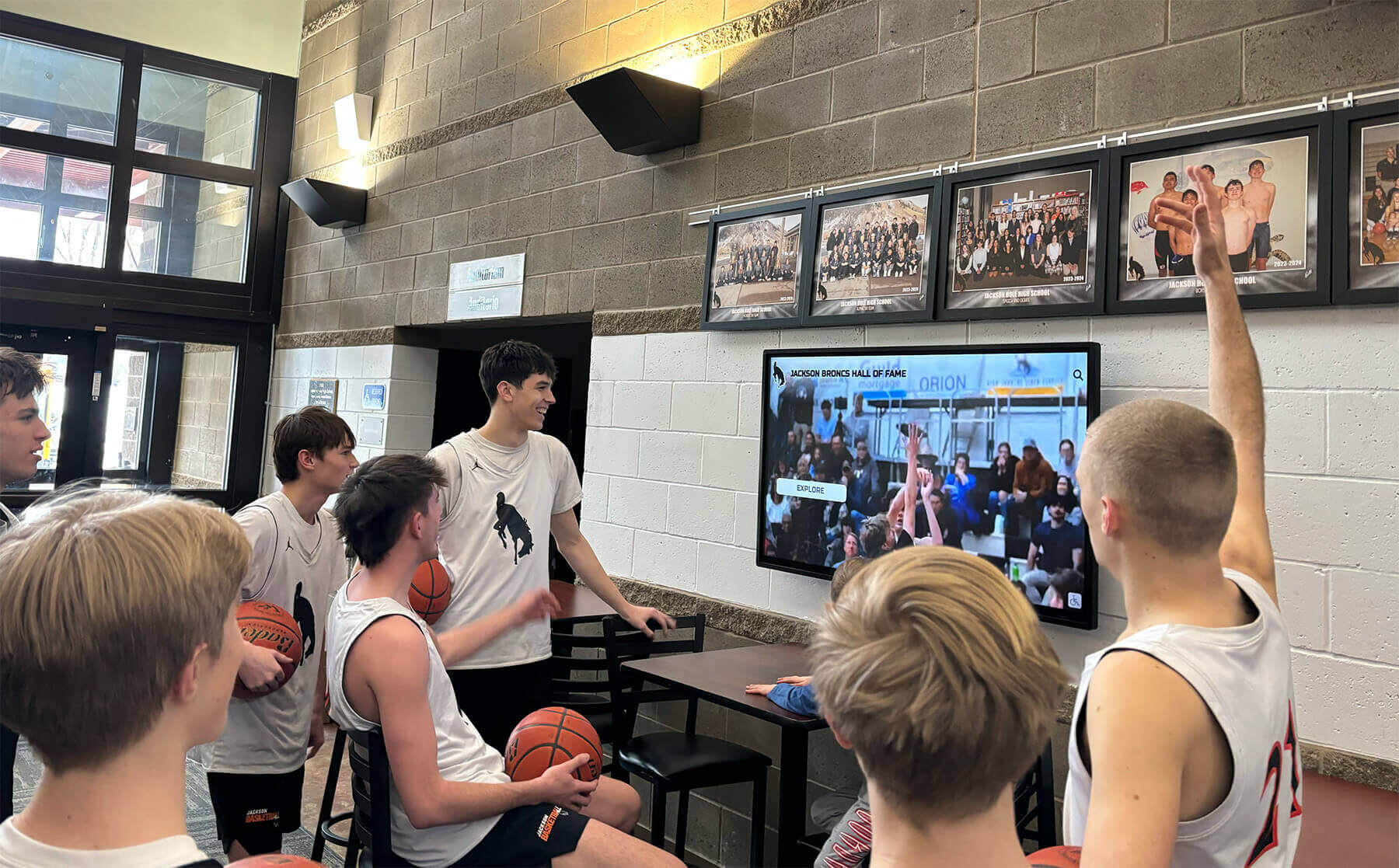
Preparing Your Facility for College Coach Visits
First impressions matter tremendously when college coaches visit your campus, making facility preparation a strategic priority that extends well beyond basic cleanliness to encompass how you showcase program excellence, athlete achievements, and institutional commitment to athletics.
Creating Coach-Friendly Athletic Spaces
College coaches visiting your facility need efficient access to athletes, information, and evaluation opportunities within limited time windows, making facility organization and visitor accommodation critical success factors.
Designated Visit Reception Areas: Establish clear arrival points where visiting coaches check in upon arrival. Reception areas should provide comfortable waiting spaces with seating, access to restrooms, visitor WiFi information, and clear signage directing coaches to relevant offices or practice facilities. Professional reception areas signal organizational competence and respect for coaches’ time.
Information Stations: Create centralized locations where visiting coaches can access essential program information including current season schedules and results, athletic staff directories with contact information, athletic facility maps and building directories, and digital displays showcasing athletic achievements and program history.
Comfortable Observation Areas: Provide appropriate viewing locations where coaches can watch practices and skill work comfortably including elevated viewing platforms or press box access at competition venues, dedicated observation seating in practice gymnasiums, and protected viewing areas for outdoor facilities during inclement weather.
Private Meeting Spaces: Many coaches request brief private conversations with high school coaches to discuss athlete capabilities, academic situations, or character questions. Having available conference rooms or offices where these confidential discussions can occur demonstrates professional consideration for coaches’ evaluation needs.
Technology Access: Modern recruiting requires technology infrastructure supporting coach evaluation including reliable WiFi throughout athletic facilities, charging stations for electronic devices, and access to video playback equipment when coaches want to review game footage immediately.
Showcasing Athletic Excellence Through Recognition Displays
College coaches visiting your facilities evaluate not just individual athletes but also overall program quality, competitive tradition, and institutional investment in athletics. Visible athletic achievement recognition provides tangible evidence addressing these evaluation criteria while creating impressive first impressions that differentiate your programs from competitors with minimal recognition infrastructure.
Championship Documentation: Prominently displayed championship recognition demonstrates program excellence through conference title and tournament victory documentation, state championship and playoff achievement visibility, and comprehensive team success tracking across multiple sports and seasons.
Individual Athlete Achievement Recognition: Showcasing individual excellence helps coaches understand your program’s track record of developing college-level talent through all-conference, all-state, and all-American selection documentation, school records and top performance displays, academic achievement and scholar-athlete recognition, and college placement and signing day celebrations.
Digital Recognition Systems: Modern interactive display technology transforms athletic recognition from static plaques into engaging showcases that impress visiting coaches while serving multiple program purposes. Digital recognition displays provide unlimited capacity accommodating comprehensive athletic history, instant updates adding new achievements immediately, multimedia content including photos and video highlights, searchable databases helping coaches research program history efficiently, and professional presentation quality reflecting institutional investment in athletics.
Solutions like Rocket Alumni Solutions enable athletic departments to create impressive recognition displays that serve both day-to-day program culture building and strategic recruiting purposes when college coaches visit campuses. These systems help coaches understand your program’s developmental track record while demonstrating the level of institutional support your athletes receive.
College Placement Documentation: Perhaps the most recruiting-relevant recognition involves documenting which colleges recruit from your programs successfully. Displays showcasing college commitment history provide coaches concrete evidence that your programs consistently produce college-ready athletes while showing which colleges and divisions recruit from your programs regularly—information that helps coaches contextualize where your current athletes fit within the broader college athletics landscape.
Facility Maintenance and Presentation Standards
Beyond recognition displays, basic facility presentation quality signals program professionalism and organizational competence that influences how coaches perceive your athletes and programs.
Cleanliness and Organization: Athletic facilities should maintain high cleanliness standards including clean locker rooms with organized storage, well-maintained competition and practice surfaces, properly functioning equipment in good repair, and orderly offices and meeting spaces.
Safety and Modern Standards: Facilities meeting modern safety and functional standards demonstrate institutional investment including appropriate padding and safety equipment, adequate lighting for safe competition and practice, proper ventilation and climate control, and accessible facilities accommodating all abilities.
Program Branding and Identity: Professional environmental graphics and branding create strong visual impressions including school colors and logos displayed throughout facilities, motivational messages and values statements, historical photographs and tradition documentation, and team banners and achievement recognition.
While major facility renovations may not be feasible, schools can significantly improve coach visit impressions through cleanliness, organization, strategic recognition displays, and attention to how facilities communicate program values and institutional investment in athletic excellence.
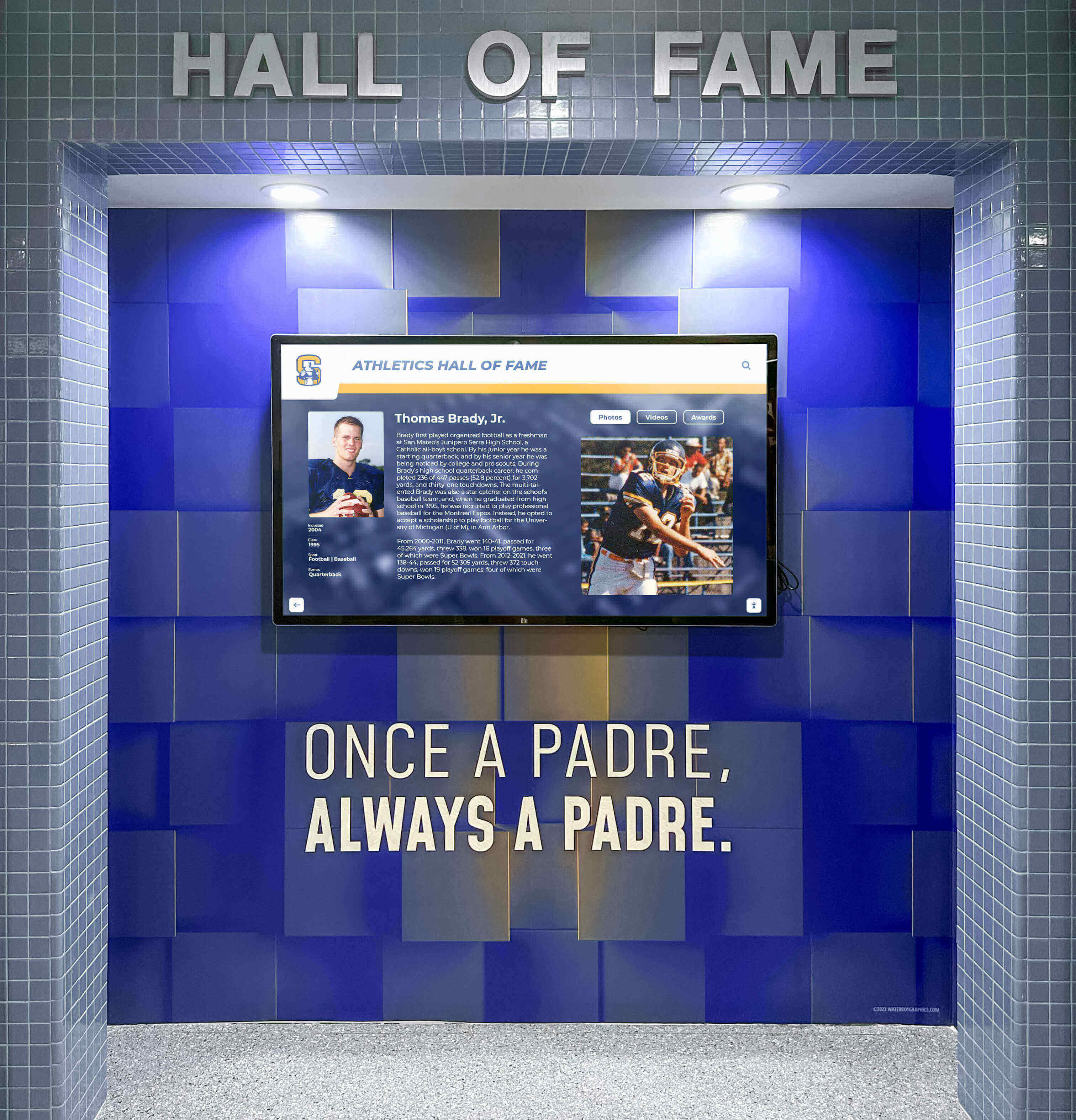
Developing Comprehensive Athlete Profiles and Documentation
College coaches visiting your school need efficient access to athlete information enabling informed recruiting evaluations. Schools providing well-organized, comprehensive athlete documentation create significant advantages for their athletes while building reputations as coach-friendly programs that respect recruiters’ limited time.
Creating Athlete Information Packets
Professional athlete information packets provide coaches portable documentation they can review between visits or share with assistant coaches and recruiting coordinators who may not attend visits personally.
Essential Profile Information: Comprehensive athlete profiles include basic demographics (name, graduation year, birth date, position/event), academic information (GPA, standardized test scores, intended major, academic honors), athletic statistics and achievements (career and season statistics, awards and recognition, personal records and rankings), physical measurables (height, weight, speed times, position-specific measurements), and contact information (athlete email, parent contact, high school coach contact).
Video Highlights and Game Footage: Modern recruiting relies heavily on video evaluation making convenient footage access essential. Provide coaches links to online highlight videos (YouTube, Hudl, recruiting platforms), recent full game footage when available, skill demonstration videos showing specific techniques, and curated clips showcasing athletes in various competitive situations.
Character and Leadership Documentation: Include information addressing questions coaches always ask about character including community service and volunteer activities, leadership roles and responsibilities, employment history demonstrating work ethic, extracurricular involvement beyond athletics, and coach and teacher testimonials speaking to character.
Schedule and Availability: Help coaches plan future evaluations by providing current season schedules with dates, times, and locations, upcoming showcase and tournament participation, practice schedules and observation opportunities, contact periods when direct athlete communication is permitted, and blackout dates when athletes are unavailable or participating in conflicting commitments.
Format and Delivery: Athlete packets can be delivered in multiple formats including printed binders or folders for in-person distribution, PDF documents emailed before or after visits, links to online athlete profiles or digital portfolios, and USB drives containing comprehensive documentation and video files.
Maintaining Athlete Academic Records
Academic eligibility represents a fundamental recruiting consideration since athletically talented students who cannot gain admission or maintain eligibility provide no value to college programs. Demonstrating academic preparedness removes significant recruiting obstacles.
Transcript Management: Keep current unofficial transcripts readily available for all athletes in active recruiting processes. Coaches often request transcripts during or immediately after visits to conduct preliminary academic eligibility assessments before investing additional recruiting resources.
Standardized Test Scores: Maintain current SAT and ACT scores helping coaches assess NCAA eligibility and institutional admission requirements. Many athletes continue testing to improve scores, so ensure you track highest section scores and superscores that maximize eligibility positioning.
Course Planning and Rigor: Document athletes’ intended coursework through graduation demonstrating commitment to meeting NCAA core course requirements and challenging themselves academically. Advanced Placement, International Baccalaureate, honors courses, and dual enrollment signal academic seriousness that colleges value.
Academic Support Documentation: If athletes utilize tutoring, study halls, or other academic support, documenting these efforts demonstrates commitment to academic success. Similarly, documentation of improvement trends (rising GPAs, improving test scores) shows positive academic trajectory even if current numbers aren’t ideal.
NCAA Eligibility Center Registration: Confirm that athletes in active recruiting have registered with the NCAA Eligibility Center and understand eligibility requirements. Coaches appreciate high school personnel who help ensure prospects understand and meet eligibility standards rather than discovering problems late in recruiting processes.
Athletic Achievement Documentation and Records
Comprehensive athletic documentation helps coaches understand athlete accomplishments in proper context while demonstrating program quality and competitive level.
Statistical Performance Records: Maintain detailed statistics across athletes’ high school careers including season-by-season statistical progressions, career achievement milestones, comparison to school and conference records, ranking within league/conference/state, and position-specific metrics relevant to each sport.
Competition Results and Tournament Performance: Document competitive success through regular season records and win-loss performance, conference and district tournament results, state playoff achievements and advancement, performance in showcase events and elite competitions, and head-to-head results against highly ranked opponents.
Individual Recognition and Awards: Track all forms of individual recognition including all-conference, all-district, all-state selections, all-American honors and national recognition, conference and state player awards, academic all-conference and scholar-athlete awards, and team awards like Most Valuable Player or captain designations.
Strength, Speed, and Testing Results: Many sports value objective testing metrics that college coaches use for comparative evaluation including 40-yard dash, pro agility, vertical jump times, position-specific speed and agility measurements, strength testing results from combines, and relative strength metrics (power cleans, squats, bench press relative to body weight).
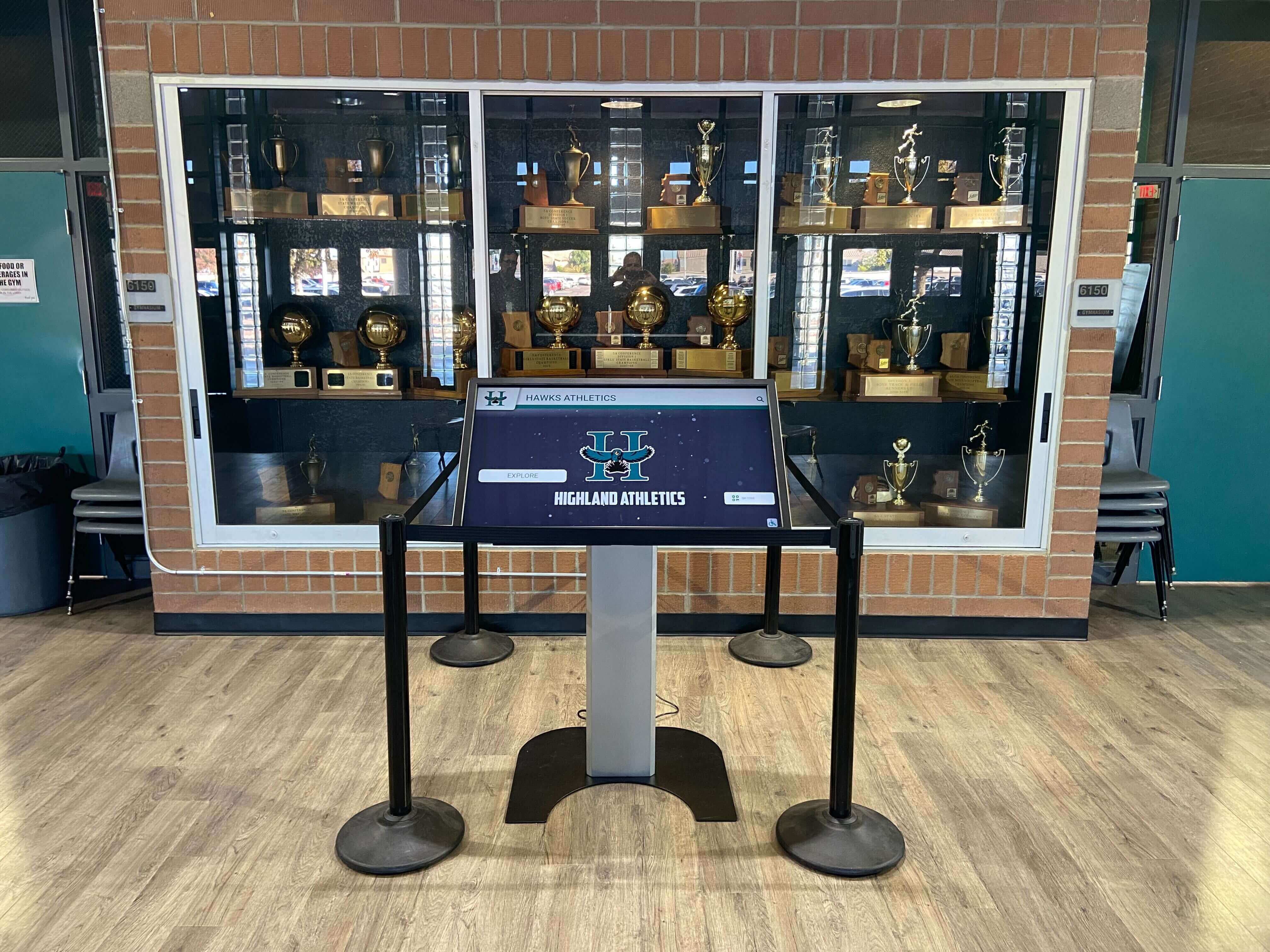
Hosting College Coach Visits Professionally
How you manage coach visits during their actual campus presence significantly impacts their impressions of your program, athletes, and institutional professionalism—factors that influence recruiting interest and willingness to return for future evaluations.
Pre-Visit Communication and Coordination
Most productive coach visits begin well before coaches arrive on campus through effective advance communication that sets clear expectations and ensures efficient time use.
Visit Request Response Protocols: When coaches contact your school requesting visits, respond promptly (within 24 hours) confirming your ability to accommodate the visit or offering alternative times if requested times don’t work. Delayed or poor communication frustrates coaches with limited recruiting windows and creates impressions of disorganization that may unconsciously influence their evaluation of your athletes and program.
Information Exchange: Before visits, provide coaches relevant information including athlete availability and practice/competition schedules, specific athletes the coach is interested in evaluating, facility access options and any restrictions, parking information and check-in procedures, and contact information if the coach needs to adjust timing or cancel.
Expectation Setting: Clarify what the visit will entail to avoid misunderstandings including whether athletes will be practicing, competing, or available for observation, time allocated for the visit and any schedule constraints, opportunities for private coach-to-coach conversations, and any restrictions based on recruiting calendar period (contact vs. evaluation periods).
Competition Schedules: If coaches are visiting to watch competitions, provide detailed schedules including pre-game arrival timing and warm-up schedules, estimated game start times and duration, athlete participation expectations (starting lineup, playing time), post-game availability for brief conversations, and any unusual format considerations (tournament play, multiple games, etc.).
Managing the Visit Experience
During the visit itself, your goal is facilitating efficient coach evaluation while demonstrating professional program management and athlete quality.
Arrival and Check-In: Welcome coaches professionally upon arrival by meeting them at designated check-in locations, providing visitor identification or parking passes if required, offering brief facility orientation, and introducing them to relevant staff members (athletic directors, sport-specific coaches, administrators).
Practice and Competition Observation: Facilitate optimal viewing experiences by positioning coaches where they have clear sightlines, providing context about what they’re observing (practice focus, specific drills, athlete roles), being available to answer questions without hovering, and respecting coaches’ need to focus on evaluation rather than constant conversation.
Athlete Interactions: During contact periods when direct athlete-coach communication is permitted, facilitate appropriate interactions by allowing reasonable private conversation time, ensuring athletes are professional and respectful, monitoring for compliance with recruiting rules, and intervening if conversations become inappropriate or extend too long disrupting practice.
Coach-to-Coach Conversations: College coaches typically want private conversations with high school coaches to discuss athletes candidly. Accommodate these discussions by providing private meeting spaces, allocating sufficient time without rushing, offering honest assessments of athlete capabilities, and discussing academic situations, character, and coachability factors that coaches need to understand.
Facility Tours: If coaches are interested, provide brief tours highlighting relevant facilities including competition venues and practice spaces, strength and conditioning facilities, training and treatment areas, meeting rooms and film review spaces, and recognition displays showcasing program history and college placement success.
Providing Comprehensive Athlete Assessments
College coaches value high school coaches who provide honest, nuanced athlete evaluations rather than generic praise that fails helping coaches make informed recruiting decisions.
Athletic Ability and Skill Assessment: Provide specific, detailed evaluation of athletic capabilities including clear identification of strengths and areas needing development, honest assessment of college readiness and projection, comparison to past athletes who’ve played at various college levels, and realistic evaluation of competition level and how athletes compare to elite prospects.
Character and Coachability Evaluation: Address the intangible factors that determine college success including work ethic and dedication to improvement, response to coaching and ability to implement corrections, leadership qualities and team dynamic contributions, academic discipline and time management, and any character concerns coaches need to understand.
Academic Situation Transparency: Be forthright about academic standing and eligibility including current GPA and testing status, academic trajectory (improving, stable, declining), potential eligibility concerns or admission challenges, academic support needs or learning differences, and realistic assessment of academic fit at various institution types.
Fit and Interest Assessment: Help coaches understand whether legitimate mutual interest exists including athlete’s genuine interest level in the coach’s school, family financial considerations and scholarship needs, geographic preferences or limitations, other schools recruiting the athlete seriously, and timeline for making recruiting decisions.
This honest assessment helps coaches allocate recruiting resources efficiently rather than pursuing athletes who aren’t realistic fits, building trust that encourages coaches to return to your program for future recruiting cycles knowing they’ll receive straightforward information rather than inflated evaluations designed to generate maximum scholarship offers regardless of realistic fit.
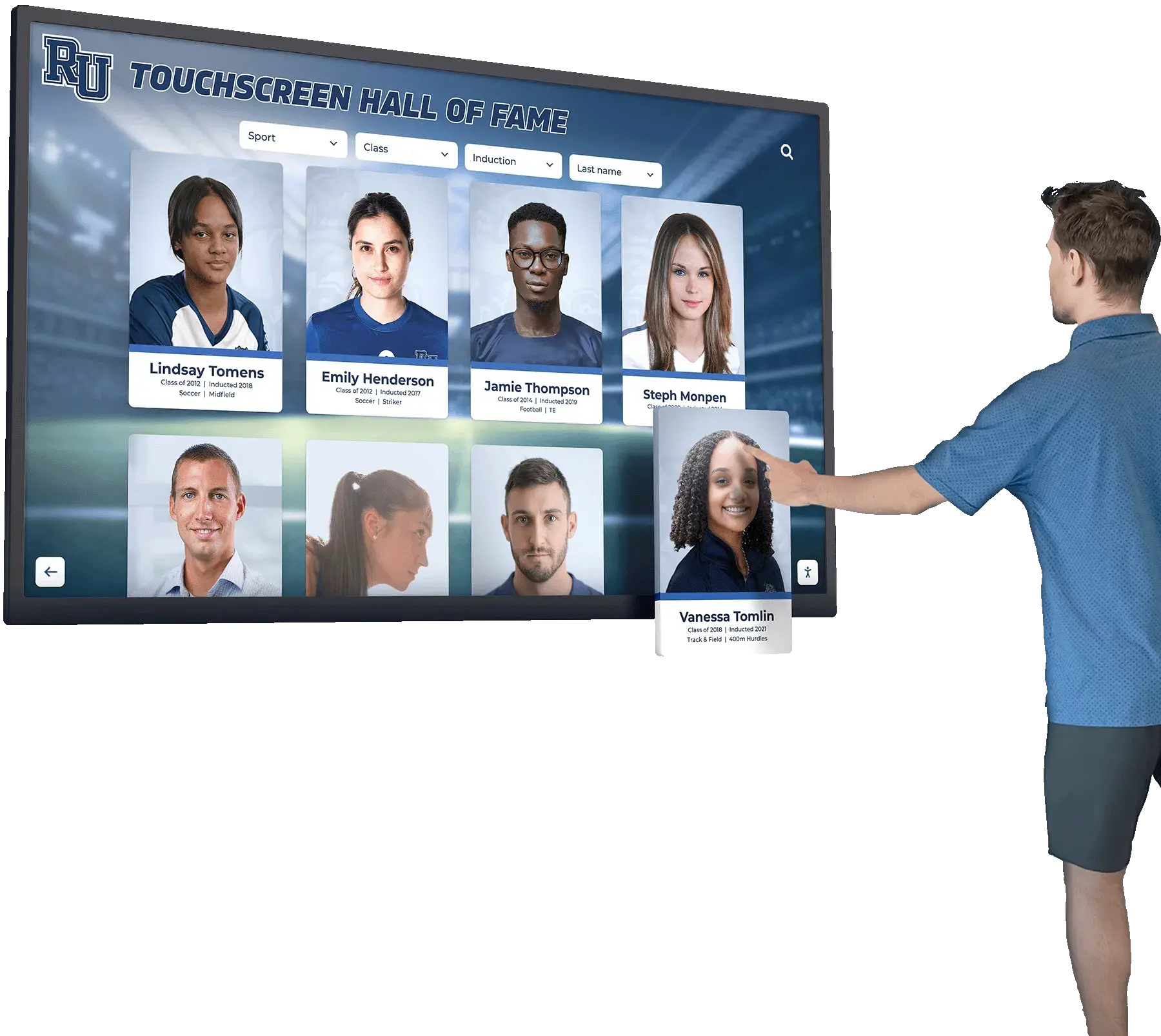
Building Long-Term College Coaching Relationships
Individual coach visits represent tactical opportunities within broader strategic relationships between high school and college programs that extend across multiple years and recruiting cycles. Schools that approach coach visits with relationship-building mindsets rather than transactional individual recruitment perspectives create sustainable competitive advantages for their athletic programs.
Establishing Your Program’s Recruiting Reputation
College coaches talk with each other frequently, sharing information about which high school programs prepare athletes well for college athletics, which coaches provide honest evaluations, and which schools make visiting efficient and productive. Your program’s reputation within the college coaching community significantly impacts recruiting attention and outcomes.
Consistency and Reliability: Build positive reputation through consistent practices including responding to coach inquiries promptly every time, maintaining promised communication schedules, providing accurate athlete information consistently, and delivering on commitments made to visiting coaches.
Honesty and Transparency: Nothing damages recruiting relationships faster than dishonest athlete evaluations. Be known for truthfulness about athlete academic situations and character, realistic assessments of competitive ability, transparent communication about other recruiting interest, and willingness to say when athletes aren’t good fits rather than pushing unrealistic matches.
Professional Cooperation: Make visiting your program easy and productive through efficient visit scheduling and accommodation, organized athlete information and documentation, appropriate facility access and observation opportunities, and respectful adherence to NCAA rules and recruiting calendars.
Athlete Preparation: Demonstrate that you prepare athletes appropriately for college athletics through proper training and strength conditioning, competitive scheduling and tournament participation, academic preparation and eligibility awareness, and character development and maturity expectations.
Maintaining Communication Between Visit Cycles
Recruiting relationships shouldn’t go dormant between visits. Maintaining appropriate contact keeps your program and athletes visible while demonstrating ongoing professionalism.
Regular Season Updates: Throughout competitive seasons, periodically update coaches recruiting your athletes about significant developments including notable performances and achievements, injury situations affecting availability, academic progress and eligibility updates, changes in recruiting interest or college preferences, and upcoming competitions or showcases where additional evaluation is possible.
Post-Season Summaries: After seasons conclude, provide coaches comprehensive summaries including final season statistics and achievements, all-conference and other recognition received, off-season training plans and development focus, summer competition and showcase schedules, and timing expectations for recruiting decisions.
Program Success Updates: Keep coaches informed about overall program achievements that reflect coaching quality and competitive level including championship results and playoff advancement, individual athlete recognition and awards, college placement success from graduating classes, facility improvements and program investments, and coaching staff continuity and program stability.
Appropriate Frequency: Balance maintaining visibility with avoiding excessive contact that becomes annoying. Monthly updates during competitive seasons and quarterly contact during off-seasons typically maintains relationships without overwhelming busy college coaches managing dozens or hundreds of prospects simultaneously.
Creating College Placement Documentation
Systematically documenting where your athletes compete at college levels provides powerful evidence of program quality that influences future recruiting cycles.
Comprehensive Placement Tracking: Maintain detailed records of all athletes who compete in college including names and graduation years, colleges and athletic programs, NCAA division levels, scholarship status when appropriate, and playing status and competitive success.
Historical Placement Analysis: Analyze placement patterns revealing program strengths including which colleges recruit from your programs regularly, which NCAA divisions best match your athletes typically, which position groups or event specialists succeed most consistently, and how placement rates have evolved over time.
Visible Placement Recognition: Showcase college placement success prominently through digital displays featuring college-bound athletes, physical signage celebrating college commitments, website sections documenting placement history, and social media content highlighting athlete college success.
This placement documentation serves multiple strategic purposes—validating program quality to college coaches evaluating whether to recruit from your programs, motivating current underclassmen by demonstrating pathways to college competition, attracting prospective students and families evaluating athletic programs, and providing evidence justifying athletic department investments and budget requests.
Leveraging Alumni Networks for Recruiting Connections
Former athletes competing in college athletics become valuable recruiting assets through their connections to college coaching staffs and firsthand knowledge of college programs.
Alumni Coach Connections: Athletes who have positive college experiences often develop strong relationships with college coaches who may seek their input about current high school athletes considering those programs. Maintaining connections with athlete alumni enables you to leverage these relationships appropriately through informal information exchange about high school athletes’ character and fit, introduction facilitation when appropriate connections exist, and perspective sharing about what types of athletes succeed at particular programs.
Alumni as Program Ambassadors: Former athletes can actively support high school program recruiting when currently competing college athletes return to campus and interact with current high school athletes, successful alumni share their experience with prospective college athletes considering similar paths, and alumni networking helps identify coaching contacts at schools recruiting your athletes.
Multi-Generational Recruiting Relationships: Programs that consistently place athletes at particular colleges develop multi-generational recruiting relationships where college coaches return repeatedly knowing your program produces athletes who succeed in their systems, your coaches understand college program expectations enabling better athlete preparation, and trust develops through repeated positive experiences over many recruiting cycles.
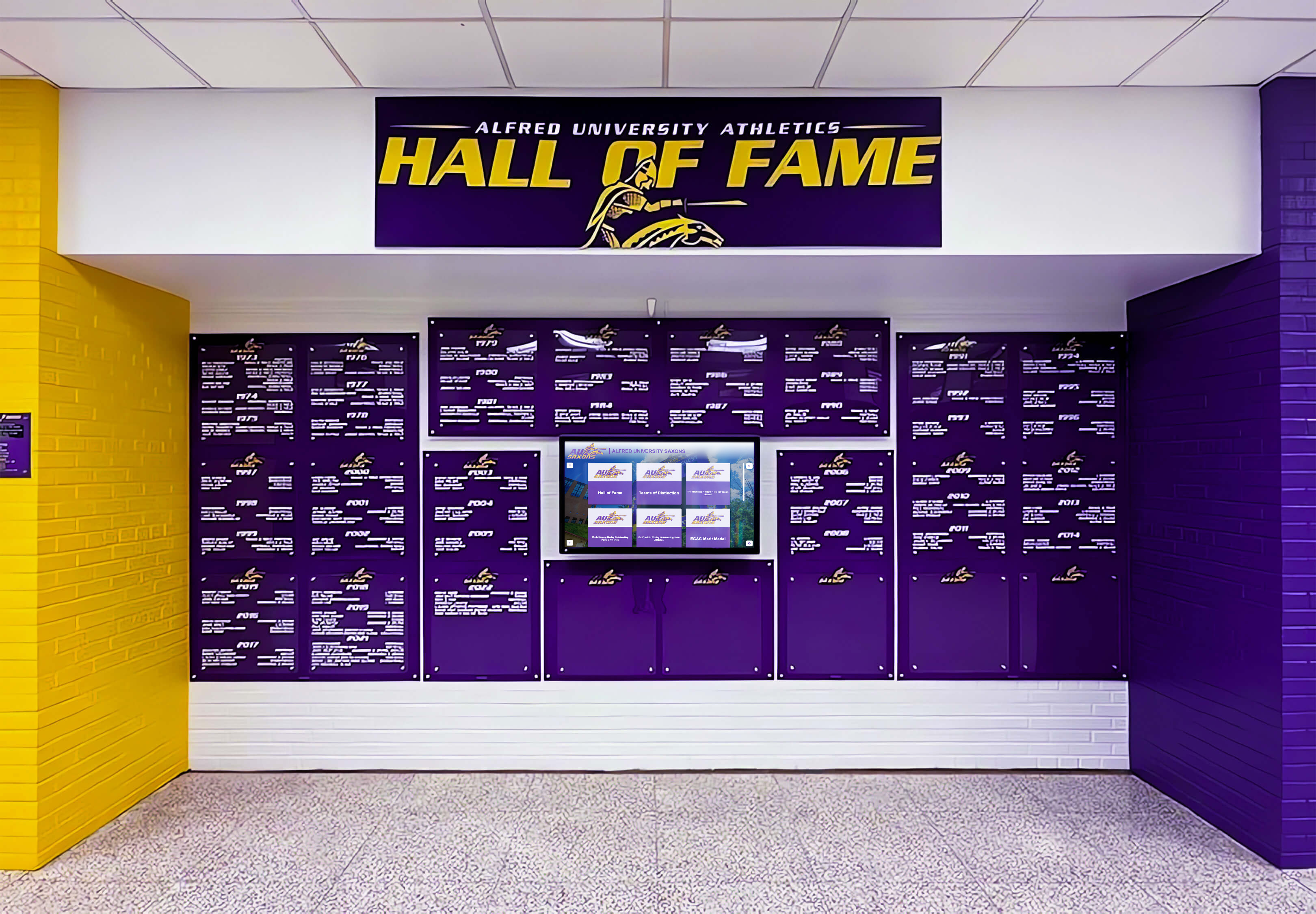
Navigating NCAA Recruiting Rules and Compliance
College coach visits occur within complex regulatory frameworks governed by NCAA rules designed to prevent recruiting abuses while creating equitable competition among college programs. High school personnel must understand relevant rules to avoid inadvertently creating compliance issues.
Understanding Contact Rules and Restrictions
NCAA rules carefully define when and how college coaches can interact with prospective student-athletes, with violations potentially resulting in severe penalties for college programs.
Contact vs. Evaluation Period Differences: During contact periods, coaches can have unrestricted face-to-face contact with athletes and their families at high schools, homes, or competition venues. During evaluation periods, coaches can watch athletes compete and visit high schools but can only exchange brief hellos with athletes—no substantive recruiting conversations. High school personnel must understand which period applies when coaches visit to avoid facilitating prohibited contact.
Coaching Staff Member Limitations: NCAA rules limit the number of coaching staff members who can engage in recruiting activities. During high school visits, this typically means one or two coaches from a college program, not entire coaching staffs. Schools should track who visits and ensure appropriate coach credentialing.
Dead Period Restrictions: Absolutely no in-person recruiting contact occurs during dead periods. High school programs should not schedule coach visits or allow coaches access to athletes during these prohibited windows. Violations during dead periods result in particularly serious penalties given the clear rule prohibitions.
Grade-Level Restrictions: Many sports prohibit coach contact with athletes before specific grade levels (often sophomore or junior year). High school personnel must not facilitate prohibited early contact with underclass athletes even if athletes or families request such contact.
Monitoring Communication and Contact
While high school programs don’t bear direct compliance responsibility, assisting in maintaining proper boundaries protects both college programs and high school athletes.
Facilitating Appropriate Communication: During permissible contact periods, provide private spaces where coaches and athletes can speak freely. During evaluation periods, ensure conversations remain brief and comply with “hello” limitations. Politely intervene if communication appears to exceed permissible parameters.
Documentation of Visits: Some high schools maintain logs of college coach visits recording dates, schools represented, coaches who visited, and athletes evaluated. This documentation helps track recruiting interest, plan future engagement, and provide records if compliance questions arise.
Parent Involvement Management: NCAA rules govern coach contact with parents as well as athletes. High school personnel should not facilitate parent involvement during evaluation periods when such contact is prohibited, schedule parent meetings during contact periods when appropriate, and educate parents about communication rules so they don’t create compliance issues through well-intentioned but prohibited contact initiation.
Electronic Communication Considerations: While high school visits focus on in-person contact, coaches and athletes may exchange phone numbers or social media information during contact periods. High school coaches should educate athletes about appropriate electronic communication, warn against sharing recruiting conversations publicly, and remind athletes that electronic communication must comply with recruiting rules.
Sport-Specific Rule Variations
NCAA recruiting rules vary significantly by sport, requiring high school personnel working across multiple sports to track different requirements.
Football-Specific Rules: Football maintains particularly strict recruiting calendars with limited contact periods, extensive dead periods, specific rules about junior college transfers, and detailed regulations about recruiting materials and communication methods.
Basketball Recruiting Specialties: Basketball recruiting involves extensive summer evaluation periods, specific rules about AAU and club team involvement, recruiting service and showcase limitations, and unique international athlete recruiting provisions.
Other Sports Considerations: Each NCAA sport maintains sport-specific recruiting calendars and rules requiring athletic directors and multi-sport coaches to consult current NCAA guidelines regularly. Rules change periodically through NCAA legislation requiring ongoing education and awareness of current requirements.
Maximizing Recruiting Outcomes from Coach Visits
Beyond hosting individual visits professionally, strategic approaches help high school programs maximize recruiting outcomes for athletes while building sustainable recruiting advantages across multiple sports and years.
Creating Comprehensive Visit Schedules
Rather than managing coach visits reactively as random requests arrive, strategic programs proactively create visit opportunities that increase coach exposure to athletes.
Coordinated Visit Days: Some programs establish designated days when multiple college coaches can visit simultaneously, observing practices or competitions with numerous college recruiters present. These coordinated visits provide efficiency for coaches who can evaluate multiple athletes in single trips while creating competitive dynamics where coaches see others recruiting the same athletes.
Showcase Event Hosting: Programs with adequate facilities can host showcase events specifically designed for college coach evaluation including prospect camps featuring athletes from multiple schools, all-star competitions bringing together elite regional talent, skills combines with standardized testing and measurement, and tournament hosting that draws coaches evaluating multiple teams simultaneously.
Season Planning: Schedule competitive seasons to maximize college coach attendance by hosting games during evaluation periods when coaches attend in largest numbers, scheduling challenging opponents drawing college coach attention, participating in showcase tournaments where numerous coaches evaluate, and planning practice schedules accommodating coach visit requests during contact periods.
Leveraging Technology for Remote Evaluation
While in-person visits remain important, technology enables coaches to evaluate athletes remotely, extending your program’s recruiting reach beyond coaches who can physically visit.
Video Platform Utilization: Modern recruiting relies heavily on video evaluation through platforms like Hudl providing comprehensive game footage and highlight compilation, recruiting service profiles (MaxPreps, PrepHoops, etc.) aggregating athlete information, YouTube channels offering accessible video libraries, and custom athlete websites or digital portfolios providing comprehensive documentation.
Virtual Visit Options: Particularly for athletes generating interest from distant colleges, virtual visits provide preliminary evaluation through video conference facility tours, live-streamed practices or competitions, virtual meetings between athletes and coaches, and digital information packet sharing.
Social Media Strategy: Appropriate social media use amplifies athlete visibility including highlight sharing through Twitter, Instagram, and TikTok, achievement announcements and recognition, practice and training content demonstrating work ethic, and appropriate engagement with college coach social media accounts.
Post-Visit Follow-Up and Relationship Maintenance
How you follow up after coach visits influences both immediate recruiting outcomes and longer-term relationship development.
Visit Debrief: After coaches leave campus, quickly debrief the experience including athlete reactions and impressions, coach feedback and evaluation comments, action items requiring follow-up, and documentation of recruiting interest level and timeline.
Thank You Communication: Send brief thank you emails to visiting coaches within 24 hours expressing appreciation for their time, reiterating athlete interest if applicable, confirming any agreed-upon next steps, and offering to provide additional information as needed.
Ongoing Updates: Based on coach interest level and recruiting timeline, provide appropriate ongoing communication including performance updates after strong competitions, progress reports on identified development areas, academic updates and eligibility status, and timeline communications as recruiting decisions approach.
Strategic Information Sharing: Share information strategically to maintain recruiting interest through timely notification about other college interest and recruiting progress, exclusive information about athlete preferences or decision factors, early notification about notable achievements or recognition, and advance scheduling of future evaluation opportunities.
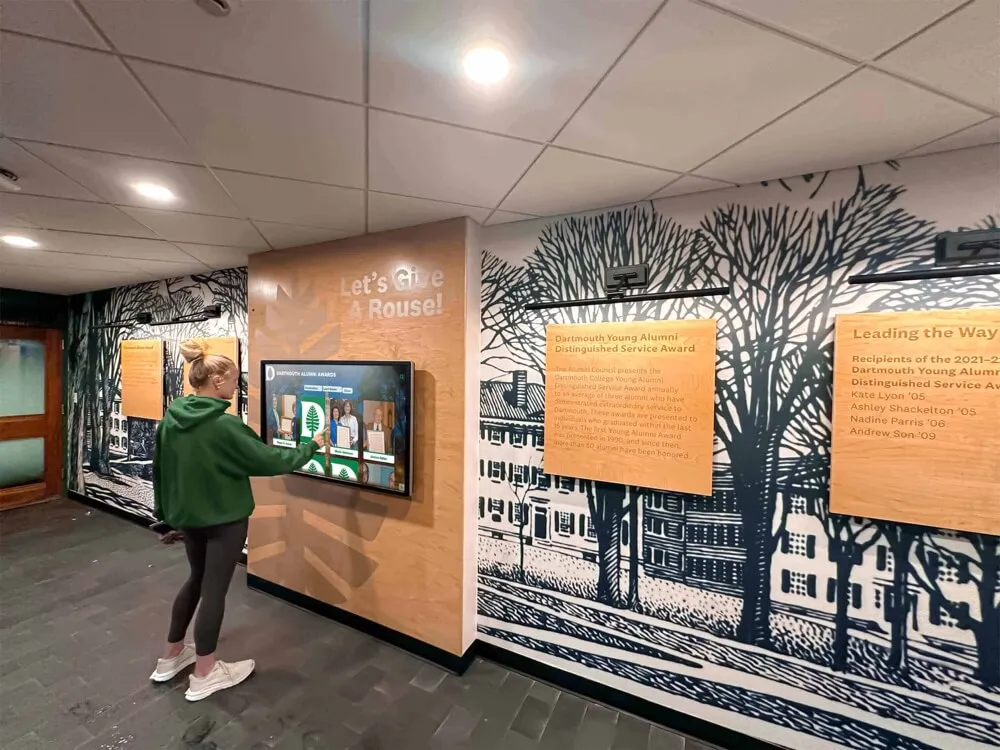
Common College Coach Visit Challenges and Solutions
Even well-prepared programs encounter predictable challenges when hosting college coach visits. Understanding common obstacles and proven solutions prevents problems from undermining recruiting opportunities.
Challenge: Limited Notice for Visit Requests
College coaches often operate on short timelines, requesting visits with minimal advance notice that challenges school scheduling and coordination.
Solution: Flexible Accommodation Systems: Establish protocols enabling rapid visit approval and coordination through designated point people with authority to approve visits quickly, standing facility access permissions for college coaches, athlete notification systems enabling quick availability communication, and backup coordination personnel when primary contacts are unavailable.
Challenge: Multiple Coaches Visiting Simultaneously
During peak recruiting periods, numerous coaches may request visits on the same days creating logistical complexity.
Solution: Coordinated Visit Management: Implement systems for managing multiple simultaneous visits including designated host assignments so each coach receives appropriate attention, staggered arrival times preventing bottlenecks, shared observation periods for practices or competitions, separate private meeting spaces for coach-to-coach conversations, and efficient rotation protocols if facility space limits simultaneous coach numbers.
Challenge: Visit Cancellations and No-Shows
Coaches sometimes cancel visits at the last minute or simply don’t appear without notification, frustrating schools that adjusted schedules to accommodate visits.
Solution: Confirmation Protocols and Flexibility: Minimize disruption through systems including visit confirmation requests 24 hours before scheduled visits, maintaining normal practice/competition schedules rather than special preparation for visits, backup communication channels for last-minute changes, and gracious accommodation when genuine emergencies cause cancellations while noting unreliability for future reference.
Challenge: Inappropriate Contact During Evaluation Periods
Athletes or parents unfamiliar with recruiting rules may attempt extended conversations with coaches during evaluation periods when only brief hellos are permitted.
Solution: Education and Monitoring: Prevent compliance issues through athlete and family education about recruiting period rules and restrictions, physical positioning during evaluation periods that naturally limits extended contact, polite intervention when conversations exceed appropriate boundaries, and post-visit education if rules were unintentionally violated.
Challenge: Managing Athlete Expectations
Athletes may misinterpret coach visits as guaranteed recruiting interest or become discouraged when expected visits don’t materialize.
Solution: Realistic Expectation Setting: Help athletes maintain appropriate perspectives through honest communication about what visits mean and don’t mean, explaining that visits indicate interest but not commitments, discussing timeline realities of recruiting processes, and maintaining focus on controllable factors like performance and improvement rather than unpredictable recruiting outcomes.
Conclusion: Creating Sustainable Recruiting Advantages Through Professional Coach Visit Management
College coach visits represent high-leverage opportunities that, when managed professionally, create cumulative competitive advantages benefiting not just individual athletes in immediate recruiting cycles but entire athletic programs across multiple sports and years. Schools that excel at hosting college coaches develop reputations within college coaching communities as programs that understand the recruiting process, prepare athletes appropriately for college athletics, and operate with professionalism that makes visiting efficient and productive.
These reputations translate directly into recruiting success—more frequent coach visits, increased recruiting attention for athletes who might otherwise be overlooked, stronger placement rates to college programs, better scholarship opportunities resulting from competitive recruiting interest, and sustainable recruiting pipelines where college coaches return repeatedly to programs where they’ve previously recruited successfully.
The most effective approach to college coach visit management combines multiple elements working synergistically: facility preparation including impressive digital recognition displays showcasing program excellence and college placement success, comprehensive athlete documentation providing coaches efficient access to evaluation information, professional visit hosting that respects coaches’ limited time while facilitating thorough athlete evaluation, honest athlete assessments building trust and long-term relationship foundations, consistent communication maintaining visibility between visit cycles, and strategic recruiting relationship development treating individual visits as tactical opportunities within broader multi-year relationship building.
For high school athletic directors, coaches, and administrators committed to maximizing athlete recruiting success, investing in professional college coach visit preparation and management processes pays ongoing dividends through improved recruiting outcomes, stronger college coaching relationships, enhanced program reputations, and sustainable competitive advantages that compound over time as recruiting success validates program quality and attracts additional college attention creating virtuous cycles of improvement and opportunity.
Whether you’re establishing coach visit protocols for the first time, refining existing processes that aren’t producing desired results, or seeking incremental improvements to already solid programs, the strategies outlined in this guide provide frameworks for creating professional, efficient, athlete-focused college coach visit experiences that serve your athletes’ interests while building institutional recruiting capabilities benefiting entire athletic departments for years to come.
By treating college coach visits not as occasional disruptions but as strategic opportunities deserving systematic preparation, professional management, and thoughtful relationship building, you create sustainable advantages that meaningfully improve your athletes’ opportunities to compete at college levels while building your program’s reputation as a preferred recruiting destination worthy of sustained college coach attention and engagement.
For additional resources on enhancing your athletic program’s recruiting capabilities, explore strategies for showcasing athlete achievements, building comprehensive recognition programs, and creating digital displays that impress college recruiters while serving broader program culture and community engagement objectives simultaneously.
